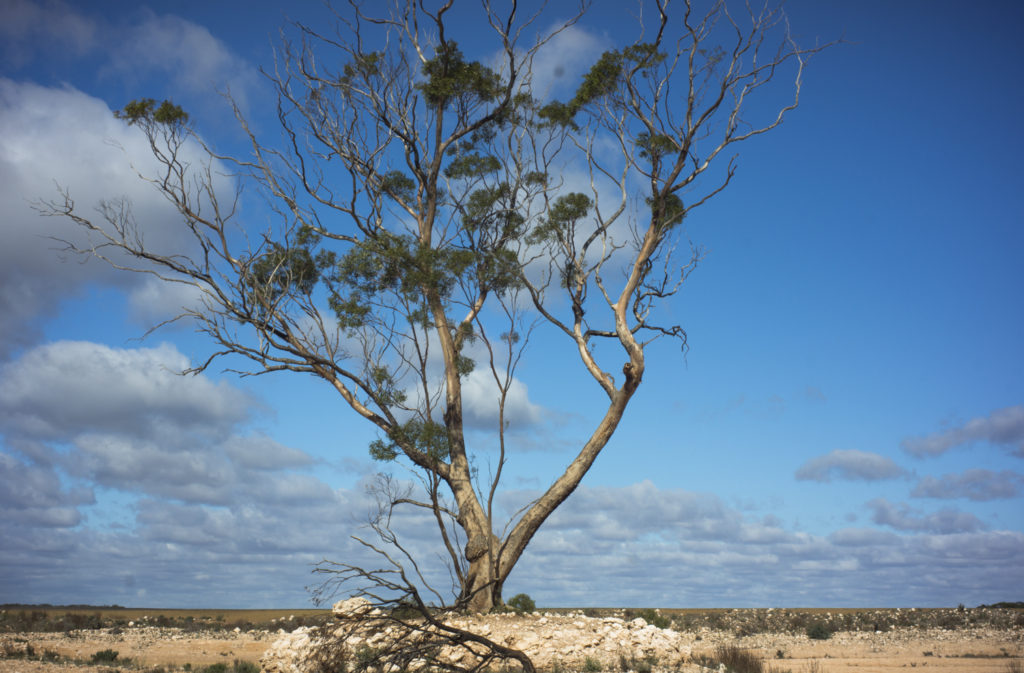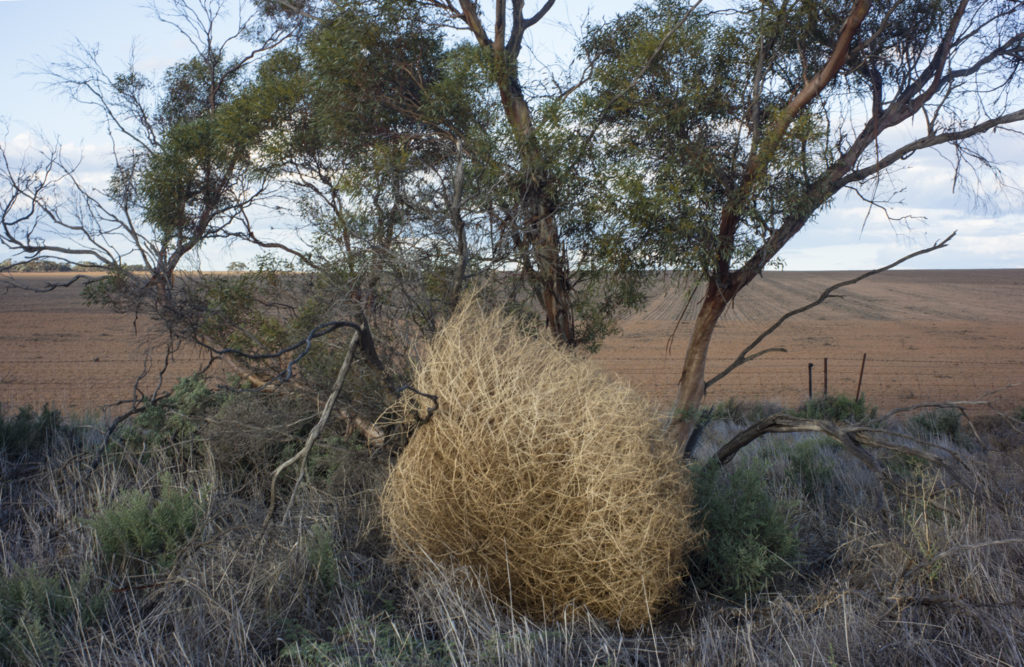Photographing the rural landscapes of the Mallee country needs to be distinguished from the idyllic pastoral tradition in Australian visual culture that in the Heidelberg tradition emphasised the tamed farmland with its abundance of natural resources. The artists represent this in the almost mandatory blue and gold palette.
This form of pastoralism refers to representations of a rural landscape during the European colonial settlement of the land, with its sheep grazing and cropping, its link to national identity, the heroic, white bush worker, the taming of the landscape and progress. This white setter pastoralism, systematically removed Indigenous people from the Australian landscape recreated a white colonial landscape which was devoid of life prior to European (characterised as human) settlement. The painters in creating a harsh but yielding Australian landscape and populating it with Aussie Bushmen, laid the foundations for contemporary Australia.
This is a mythical past when life, though tough, was rooted in the security of the seasons and community, the land was fertile, and the small towns were prosperous. This mythical past is then set against the difficulties and uncertainties of the present and the confusions of the future with the decline of the family farm and the emergence of climate change.

It is hard to see the mallee in South Australia in terms of this kind of pastoral. We are a long way from Henry David Thoreau and his simple life close to nature at Walden Pond, which he counterposed to the tensions of urban civilization, even if the ethos of country mindedness–the Australian version of agrarianism—assumes that the rural way of life is a morally better life. The Mallee is no Arcadia and the pastoral romantic (the classic British genre) with its journey from the city to Arcadia and back to the city renewed’ does work for the Australian mallee landscape and its peoples.
This is not to deny the central tenet of agrarianism—the belief that agriculture and those who work in it are fundamentally important to society. It is to question some of the other beliefs associated with agrarianism, namely: yeomanry, the family farm, the goodness of farm life, and independent, self-reliant farmers are the backbone of democracy.
It is to also suggest that it is engage with the white settler’s pastoral enterprise of clearing land and raising sheep and growing crops – and the inheritance of ‘paddocks that increasingly saline and eroded. The Australia pastoral is about work, not leisure, and this makes it very distinctive from the wilderness literature of north America, not withstanding the Tasmanian experience of Lake Pedder (1970s) and the Franklin (1980s).

The wheat belt of the Mallee is a region of radical disappearance. The light, bright yellow region is where in the space of less than one hundred years, an area the has been cleared of its native flora and fauna. The story in summary— it’s gone. The photos of the Mallee wheatbelt are haunted with this loss, even though remnants of native bush do remain on the ground on a small scale. The history of the region is one that has made Indigenous people and the trauma of colonisation invisible within this landscape and thus within history, allowing white Australia as the descendants of the colonisers and settlers to construct a narrative in which they are both the primary inhabitants and owners of the Australian landscape.

